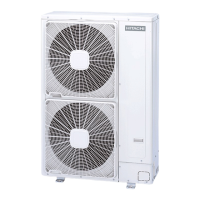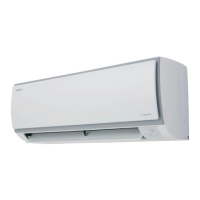8 Troubleshooting
305
SMGB0087 rev.0 - 12/2013
8
9 Check items [1] – [8].
10 Touch [+] side of the tester to DIP-IPM DCL2 terminal,
and [-] side to [P] of ISPM/DIP-IPM (soldered part) to
measure the resistance. Normal if all three terminals
have 100 kΩ or greater
11 Contrary to [10], touch [-] side of the tester to DIP-
IPM DCL2 terminal, and [+] side to [P] of DIP-IPM
(soldered part) to measure the resistance. Normal if
all three terminals have 1 kΩ or greater.
12 Touch [+] side of the tester to DIP-IPM DCL2 terminal,
and [-] side to [N] of DIP-IPM (soldered part) to meas-
ure the resistance. Normal if all three terminals have
100 kΩ or greater.
13 Contrary to [12], touch [-] side of the tester to DIP-
IPM DCL2 terminal, and [+] side to [N] of DIP-IPM
(soldered part) to measure the resistance. Normal if
all three terminals have 10 kΩ or greater. (Resistance
gradually increases during measurement.)
Contact with specied terminals
to measure.
Tester
Checking Method of Resistance for Inrush Current Prevention (Built-in Thermal Fuse)
(Measure the resistance under 1 kΩ range of a circuit tester.)
N O T E
DO NOT use a digital tester.
By placing the
+
side of tester to the
+
side of DM1
(soldering portion) on inverter PCB and the
-
side of
tester to DCL1 on inverter PCB, measure the resistance.
If the resistance is around 500Ω, it is normal. If the resist-
ance is 0Ω or innity Ω, it is abnormal.
DM1 -
DCL1
+
-
Contact with specied terminals
to measure.
Tester

